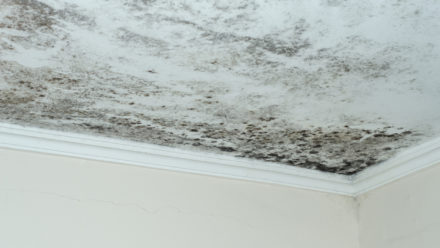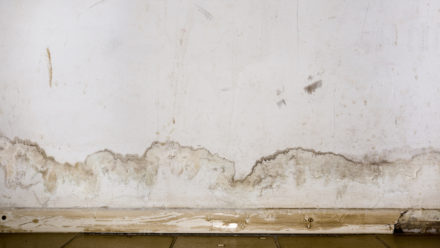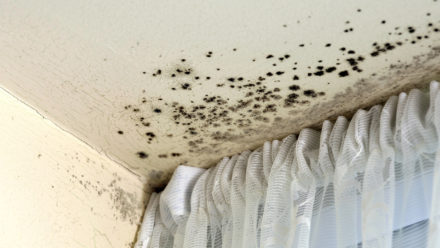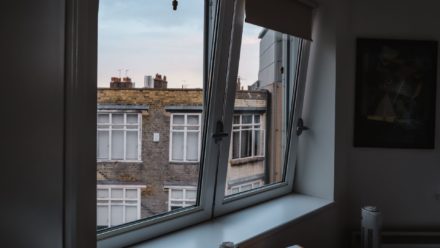Damp and mould
Damp and mould is a reoccurring issue that continually arises in our case work. This page combines all the information that residents and landlords will find useful on this key topic including guidance, spotlight reports and training options for landlords.
What is damp and mould?
Damp and moisture in the home can cause wet patches, staining and peeling walls.
This can lead to mould forming, which often looks like black, white, or green patches.
The cause of damp can be through several factors such as a leak or condensation and if left untreated can be detrimental to health and wellbeing.
Guidance
Landlord guidance
Landlords can read the guidance to find out what to do if you receive a complaint about damp and mould from a resident.
Resident guidance
Residents can read the guidance provided to understand what to do if you find damp and mould in your home.
Pre-Action Protocol for Housing Conditions Claims and service complaints
This guidance for landlords is particularly concerned with claims made pursuant to the Pre-Action Protocol for Housing Conditions Claims (the protocol) but can be applied to any relevant legal action.
Spotlight reports

Spotlight report on damp and mould - it's not a lifestyle
We encourage landlord staff and managers to review the case studies and learning provided in this report, actively consider how they would have responded to the case and whether as an organisation they would have made the same mistakes.

Follow up: Damp and mould - it's not a lifestyle
Whilst we knew that many organisations were revamping and relooking at their approaches to damp and mould in the aftermath of the Inquest into the death of Awaab Ishak, the Ombudsman produced this report to provide further insights to landlords.
Webinar on damp and mould
Centre for Learning webinar
Special webinar on damp and mould
In this webinar, the Centre for Learning team at the Housing Ombudsman run through our latest damp and mould report, explaining where we have seen some good practice in this area and where landlords still need to do more to tackle the issue.
Landlord training
The Centre for Learning has a range of courses and microlearning available to landlords via the Learning Hub. Simply log in to access the training.

Spotlight report on damp and mould eLearning
This module shares the results and recommendations of the Spotlight on Damp and Mould report published in October 2021 and the one year on follow up report Spotlight on Damp and Mould published in February 2023.
The course will enable participants to:
- list the reasons why we focused on damp and mould for these Spotlight Reports
- select the reasons why complaints are a valuable learning opportunity
- identify the 10 key factors which impact how successful damp and mould plans are in practice

What is damp and mould? Why does it happen?
Microlearning
This short microlearning looks at what damp and mould is, and the reasons why it happens.
It is based on Department for Levelling Up, Housing and Communities, the Department of Health and Social Care and the UK Health Security Agency guidance on damp and mould produced in 2023.

Social landlords' damp and mould responsibilities
Microlearning
This microlearning looks at social landlords’ damp and mould responsibilities, the common reasons why landlords fail when dealing with damp and mould and how landlords move from being reactive to proactive.
It also shares some examples of what is working for some landlords when it comes to engaging residents on damp and mould.
Virtual workshops
Centre for Learning: Spotlight on Damp and Mould virtual classroom
The Centre for Learning host free online workshops on damp and mould for member landlords.
They are an opportunity for landlords and other housing professionals to discuss the implementation of the recommendations from the Spotlight on Damp and Mould reports.
Podcasts with the Centre for Learning
Season 1, episode 3: Spotlight report on damp and mould
Catherine Ryder of the National Housing Federation interviews the Ombudsman
In this latest episode Catherine Ryder, Director of Policy and Research at the National Housing Federation, joins Housing Ombudsman Richard Blakeway to discuss issues featured in our Spotlight report on damp and mould.
Season 4, episode 1: Damp and mould discussion with Coastline Housing
In this episode, Sector Development Lead Victoria King talks to Mark England, Head of Innovation, Sustainability and Procurement at Coastline.
During the podcast, they discuss damp and mould in social housing, the Spotlight report on damp and mould, and what Coastline are doing to tackle damp and mould in their homes.
Case studies
The case studies are examples from our case work. We will always try to show one example where the landlord did things right and received a finding of no maladministration and an example where a landlord didn’t act in the correct way and received a finding of severe maladministration or maladministration.
Severe maladministration
After it was reported that there was a leak to the roof causing damp and mould in the residents’ home, it took the landlord nearly 16 months to fix it after multiple attempts. This was despite a contractor telling it that the home was not fit to live in for ten of those months.
The lack of evidence the landlord was able to provide for this case suggests that the record keeping needed to provide effective and efficient service is missing, incorrect or not used.
When the landlord did respond to the resident’s complaint after failing at first to acknowledge it, it was outside of timescales as set out in the Ombudsman’s Complaint Handling Code. It also failed to keep the resident updated throughout.
However, on the back of this case, the landlord undertook a review of 5,000 cases of damp and mould to ensure it learned the lessons from this report and can improve services for residents in the future.
No maladministration
In this case, prompt repairs and inspections took place following reports of damp and mould. When the landlord was notified of health implications, it responded accordingly and treated the repairs as urgent.
The resident was also kept up to date with repairs and expectations were managed about some of the replacements needed. Post-repairs inspections also took place in good time and there were minimal delays throughout.
Severe maladministration webinar with A2Dominion
Severe maladministration webinar with A2Dominion
This webinar is hosted by the Centre for learning with A2Dominion where they discuss a recent severe maladministration finding received from the Housing Ombudsman for damp and mould.
Landlord Learning Hub
Centre for Learning online platform
Explore our NEW learning tool - the Landlord Learning Hub.
Log in and discover the training options available to you.
If you have not logged into the new Hub, you will need to set up an account to gain access to a range of learning materials.
Resident information
When to use the Housing Ombudsman Service
If you are unable to resolve the complaint with your landlord directly via its complaint procedure, this service may be able to provide you with further assistance.
View the residents' pages to find out how to raise and complaint to your landlord and when to escalate your complaint to the Housing Ombudsman Service.
